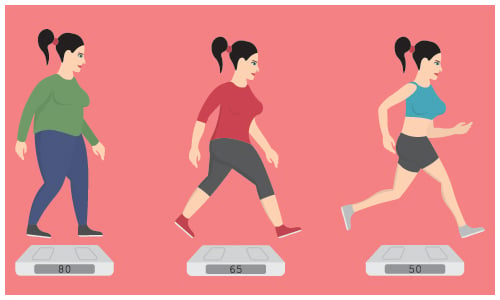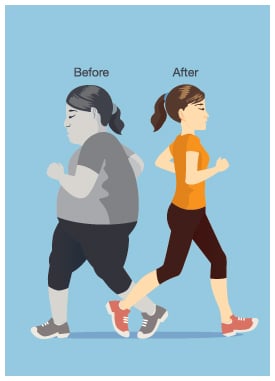Running…The Best Exercise for Weight Loss












What’s the secret to weight loss? Is it diet control? Or is it exercise? If so, what kind of exercise is best for weight loss?

There’s no harder nut to crack when it comes to finding the best way to shed those pounds. Moreover, living in the digital age does not make to job easier for us. The rapid influx of information from your Google search results, Facebook, magazines, and websites (or even your next door neighbor) may still leave you clueless about the best way to lose weight. How do you if they are facts or myths?
This is where science intervenes. The current medical consensus on weight loss comes down to two very basic aspects: caloric restriction (low carbohydrate diet) and exercise (Larsen-Meyer et al, 2010). Most importantly, they have to be done concomitantly. If you cut down your carbohydrate intake but fail to adhere to your exercise regimen, it is less likely that you will hit your target goal. This is because your body’s metabolism will slow down in response to the decreased food intake during strict diet control. Therefore by following a regular exercise plan, the body’s metabolism will be remains at its peak function, making weight regain less likely. The American Academy of Family Physicians defines low carbohydrate diet as diets that restrict carbohydrate intake to 20 to 60 grams per day (Last and Wilson, 2006).
Aerobic exercise is by far the most common form of exercise prescribed by health professionals for patients who want to lose weight. However, recently, resistance training also known as strength training or weight training has been incorporated into exercise programs after studies have shown that increased muscle mass can help boost body metabolism.
So what’s the best form of exercise?

A randomized-controlled trial study was conducted by Willis et al. to compare the effects of aerobic and resistance training on the body’s fat mass and lean mass in overweight adults. Participants were randomized into one of three exercise groups (aerobic training only, resistance training only, combined aerobic and resistance training). It was concluded that aerobic training and combined aerobic and resistance training results in significant reduction of total body mass and fat mass compared to resistance training alone. Moreover, if participant is under time restraints, it appears that aerobic training is the optimal mode of exercise for reducing fat mass.
So what’s the best form of exercise?
A study was carried out to compare the fat-burning effects of walking, running and cycling. It was concluded that running burns the most calories because it is an activity that recruits numerous muscle fibers for forward propulsion of the body. This is seldom seen in other forms of aerobic exercises. Furthermore, the weight bearing nature of running allows higher energy expenditure.
References
- “Caloric restriction with or without exercise: the fitness versus fatness debate” https://www.ncbi.nlm.nih.gov/pubmed/20010118
- “Effects of aerobic and/or resistance training on body mass and fat mass in overweight or obese adults” https://www.ncbi.nlm.nih.gov/pubmed/23019316
- “Energy expenditure of walking and running: comparison with prediction equations” https://www.ncbi.nlm.nih.gov/pubmed/15570150
- Last AR, Wilson SA (June 2006). "Low-carbohydrate diets". American Family Physician73 (11): 1942–8.
Dr.Pavinee Maneepairoj
